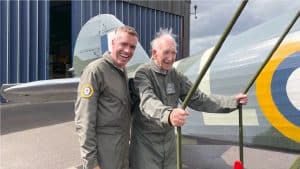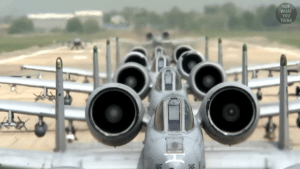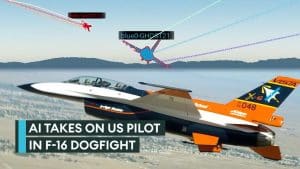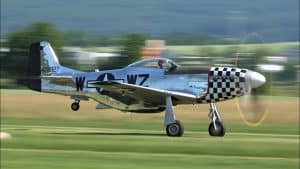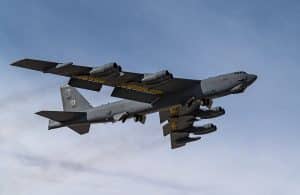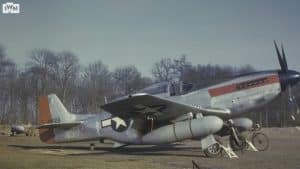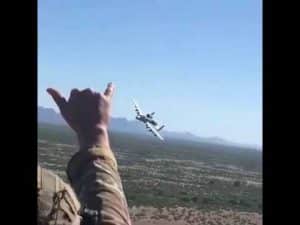15 WWII Bomber Crew Facts Every Warbird Guy Should Know
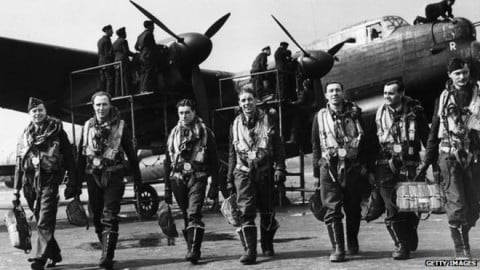
BBC
How Many Of These Do You Know?
Behind every successful air mission are two things: powerful war birds and skilled crewmen. It’s basically like doing regular day-to-day tasks with your hands — you need both. And during World War II, there’s no shortage of incredible stories and interesting facts involving the aircraft and its crew members.
PREPARE TO HAVE YOUR MIND BLOWN:
#1: Your Bare Hands Would Freeze Immediately
Because temperatures could easily fall 60 degrees below zero, B-17 crewmen had to wear heavy gloves and electrically heated suits (which can possibly short circuit). You had to have gloves on, or else your hands would stick to just about anything metal. Imagine trying to move around? Kneeling, ducking, trying to shoot down the bad guys…couldn’t feel that comfortable!

#2: Really Hard To Make It Home
Bomber crews needed to complete 25 missions before they were allowed to go home but that number was almost statistically impossible in Europe. Your chances of completing all 25 missions, at least unscathed, were slim to none. The Germans really dialed in shooting bombers out of the sky with their sophisticated FLAK systems and method.

#3: Doolittle Crew Were Actually “Newbies”
In the Doolittle Tokyo Raid, 15 co-pilots from the 16 B-25B Mitchell medium bombers were in flight school for less than a year. There was no time to waste. What had to be done, had to be done quickly, swiftly, and efficiently. This was almost a suicide mission to say the least.

#4: Don’t Blow Up The Booze!
During a Memphis Belle mission, the 91st Bomb Group unknowingly blew up an entire cellar of cognac. They only found out later. Why is this significant? Well, it’s not. It’s just a lot of booze gone to waste. What a tragedy.

#5: Pics Or It Doesn’t Count?
Pilots need to take flash photographs after dropping the bombs otherwise, it might not be included in the required number of missions for a single tour.

#6: Not Even B-29 Enola Gay Crew Knew Everything
The crewmen of the B-29 bomber Enola Gay was separated from other military groups and were trained (for the deployment of atomic bombs) in secret. They knew what they needed to know to successfully perform their duties but other than that, they had limited information.

#7: German Fighter & American Pilot: Once Enemies, Now Friends
Second Lieutenant Charlie Brown flying a B-17F Flying Fortress was crippled and badly injured but Luftwaffe fighter pilot Lt. Franz Stigler spared him. Years later, they became very close friends.

#8: So Many Risks To Crew Being That High In The Sky
Before the introduction of the B-29 Superfortress in 1944, the only war birds with pressurized cabins were the experimental ones. Although the risk for hypoxia, altitude and decompression sickness, and barotrauma was high; bombers were only given oxygen masks.

#9: Your Legs Were Most Likely To Get Hit
The most vulnerable body part that a flak can hit include the lower extremities (legs) followed by the upper extremities (arms) and the head.

#10: Really Just Kids
Average age of air crew member is 19 or 20 years old.

#11: Missions would often last for 8-10 hours. Just imagine how hard it is to complete tasks in uncomfortable clothing — from the mask to the boots.

#12: The co-pilot is tasked with contacting other crew members every 15 minutes once they enter enemy territory. He needs to ensure that ALL of them responded because otherwise it would be a sign that their oxygen mask has frozen.

#13: Bomber crewmen weren’t trained to jump out of airplanes with parachute. They were simply given instructions.

#14: The tradition of wearing the silk scarf started from pilots in World War I but it’s more than just for fashion purposes. In fact, its main practical use is for protecting your neck against the wool material of the uniform which will likely cause blisters.

#15: The flak vest developed in 1943 weighs 32 pounds!

So you see, whether you’re the pilot or tail gunner, surviving never meant being comfortable while at it. It was tough out there. We have nothing but respect for the brave men who have endured all the sufferings just to help us attain freedom.












